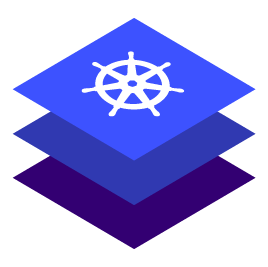Pre-provisioned: Install Kommander
Prerequisites
Ensure you have reviewed all Prerequisites for Install.
Ensure you have a default StorageClass.
Note the name of the cluster where you want to install Kommander. If you do not know the cluster name, use
kubectl get clusters -Ato display and find it.
Create your Kommander Installer Configuration File
Set the environment variable for your cluster:
CODEexport CLUSTER_NAME=<your-management-cluster-name>Copy the
kubeconfigfile of your Management cluster to your local directory:CODEdkp get kubeconfig -c ${CLUSTER_NAME} >> ${CLUSTER_NAME}.confCreate a configuration file for the deployment:
CODEdkp install kommander --init > kommander.yamlEdit the installer file to include configuration overrides for the
rook-ceph-cluster. DKP’s default configuration ships Ceph with PVC based storage which requires your CSI provider to support PVC with typevolumeMode: Block. As this is not possible with the default local static provisioner, you can install Ceph in host storage mode.You can choose whether Ceph’s object storage daemon (osd) pods should consume all or just some of the devices on your nodes. Include one of the following Overrides:
To automatically assign all raw storage devices on all nodes to the Ceph cluster:
CODErook-ceph-cluster: enabled: true values: | cephClusterSpec: storage: storageClassDeviceSets: [] useAllDevices: true useAllNodes: true deviceFilter: "<<value>>"To assign specific storage devices on all nodes to the Ceph cluster:
CODErook-ceph-cluster: enabled: true values: | cephClusterSpec: storage: storageClassDeviceSets: [] useAllNodes: true useAllDevices: false deviceFilter: "^sdb." Note: If you want to assign specific devices to specific nodes using the
Note: If you want to assign specific devices to specific nodes using the deviceFilteroption, refer to Specific Nodes and Devices. For general information on thedeviceFiltervalue, refer to Storage Selection Settings.
If required: Customize your
kommander.yaml. See Kommander Customizations for customization options. Some of them include:
See Kommander Customizations for customization options. Some of them include:
Custom Domains and Certificates, HTTP proxy, External Load Balancer, GPU utilization, etc.
Enable DKP Catalog Applications and Install Kommander
If you want to enable DKP Catalog applications after installing DKP, see Enable DKP Catalog Applications after Installing DKP.
In the same
kommander.yamlof the previous section, add these values fordkp-catalog-applications:CODEapiVersion: config.kommander.mesosphere.io/v1alpha1 kind: Installation catalog: repositories: - name: dkp-catalog-applications labels: kommander.d2iq.io/project-default-catalog-repository: "true" kommander.d2iq.io/workspace-default-catalog-repository: "true" kommander.d2iq.io/gitapps-gitrepository-type: "dkp" gitRepositorySpec: url: https://github.com/mesosphere/dkp-catalog-applications ref: tag: v2.7.0 If you only want to enable catalog applications to an existing configuration, add these values to an existing installer configuration file to maintain your Management cluster’s settings.
If you only want to enable catalog applications to an existing configuration, add these values to an existing installer configuration file to maintain your Management cluster’s settings.Use the customized
kommander.yamlto install DKP:CODEdkp install kommander --installer-config kommander.yaml --kubeconfig=${CLUSTER_NAME}.conf
Tips and recommendations
The
--kubeconfig=${CLUSTER_NAME}.confflag ensures that you install Kommander on the correct cluster. For alternatives, see Provide Context for Commands with a kubeconfig File.Applications can take longer to deploy, and time out the installation. Add the
--wait-timeout <time to wait>flag and specify a period of time (for example,1h) to allocate more time to the deployment of applications.If the Kommander installation fails, or you wish to reconfigure applications, rerun the
installcommand to retry.
